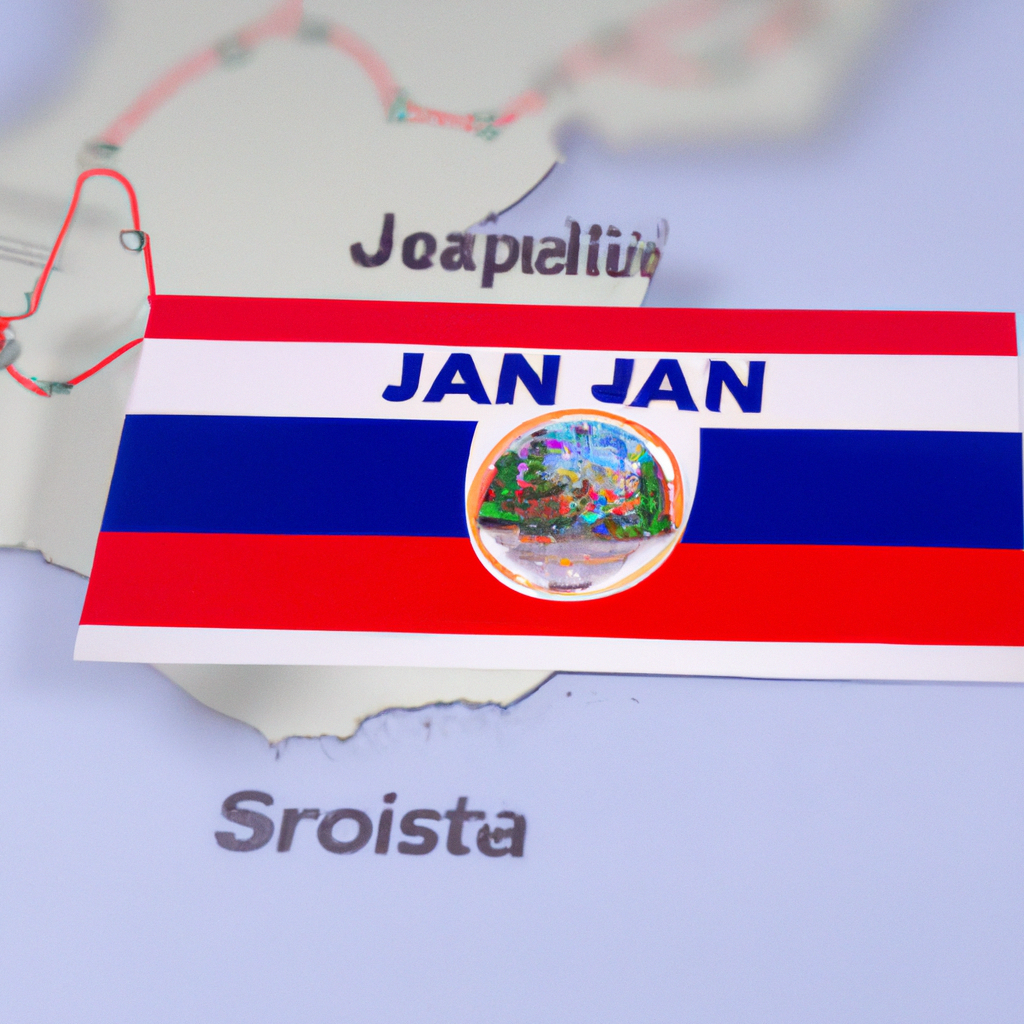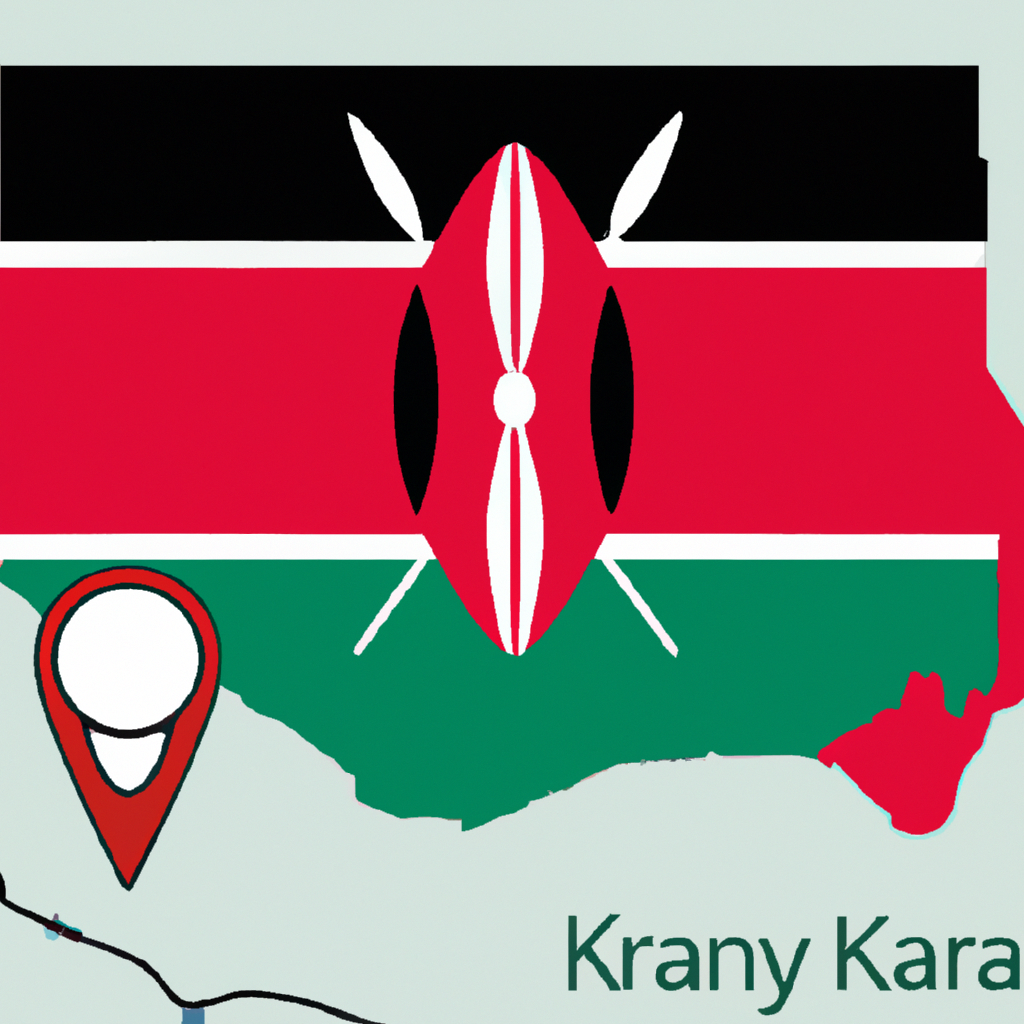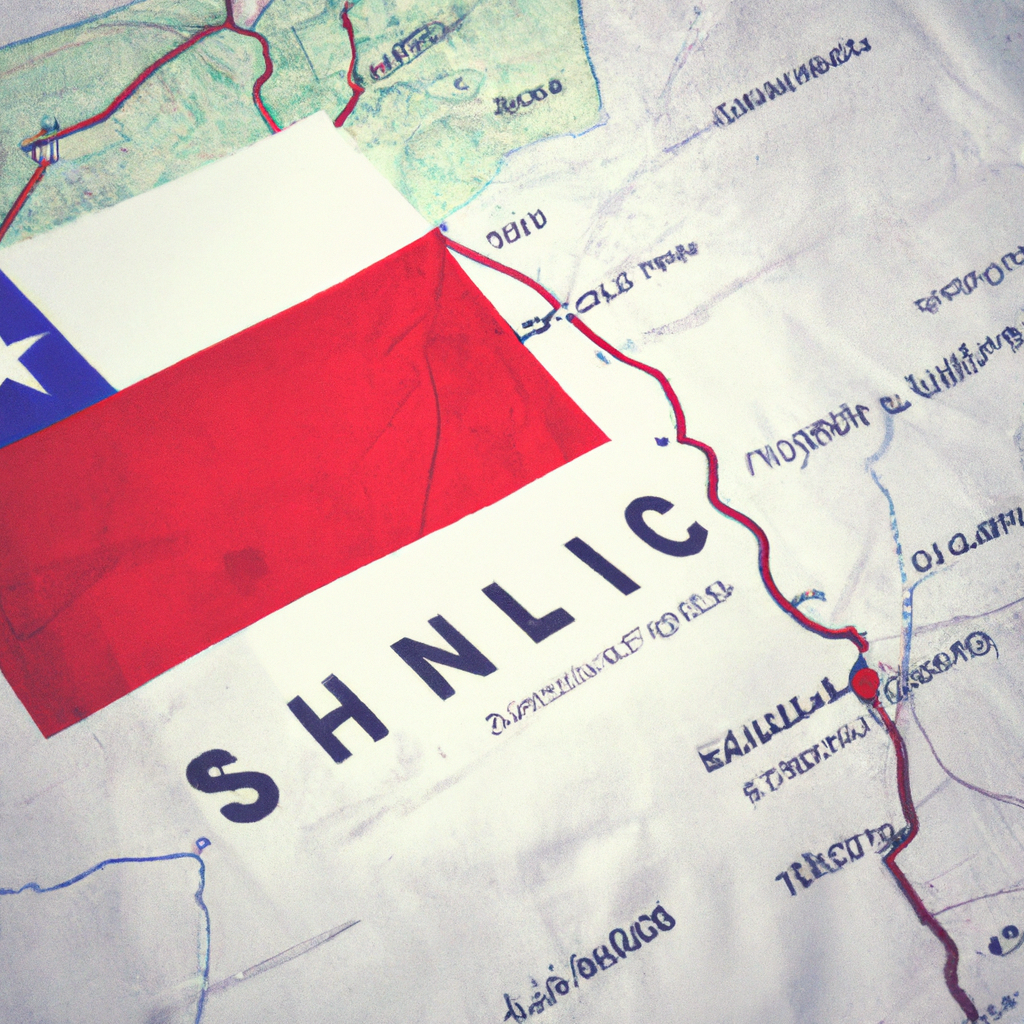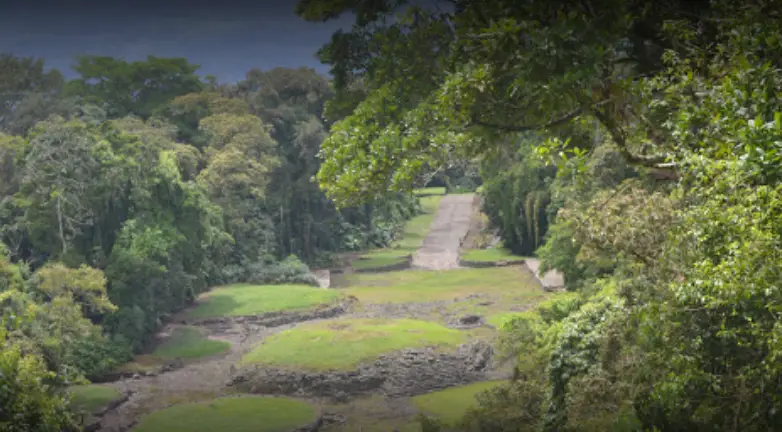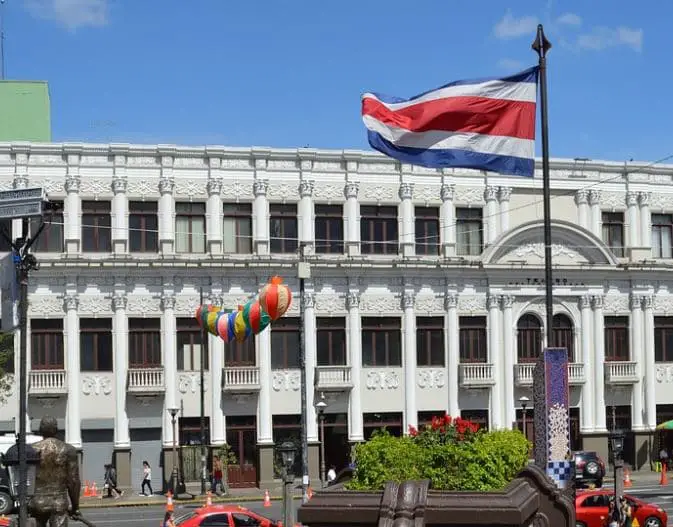San Jose, Costa Rica: Interesting Facts,History, Things to do,Why to Visit
Post ByAdequate Travel
San Jose, the capital of Costa Rica, is a popular tourist destination with so much to offer. Located in the Central Valley, San Jose is known for its vibrant culture and numerous attractions. From vibrant markets and shopping centers to tropical rainforests and botanical gardens, San Jose has plenty of interesting sights and activities to experience. Rich in history and heritage, San Jose is one of the most diverse cities in Central America. The city presents a delightful mix of history, culture, and modern life. Whether its experiencing the unique local cuisine, exploring the cobblestone streets and colonial-style buildings of the city’s oldest neighborhood, or crossing the city in the metro or the trolley, PLenty of interesting activities both in and outside the city await to be discovered. San Jose is the perfect destination for those looking for a city that balances modernity with its historic charm.
Costa Rica, officially known as the Republic of Costa Rica, is a small country located in Central America. It is bordered by Nicaragua to the north and Panama to the south. The country has a population of around 5 million people and its capital city is San Jose.Costa Rica is known for its stunning natural beauty, with a diverse landscape that includes lush rainforests, stunning coastlines, and active volcanoes. It is also famous for its abundant wildlife, including howler monkeys, sloths, toucans, and jaguars.The country is a popular tourist destination, attracting visitors from all over the world. Visitors come to enjoy activities such as hiking, surfing, zip-lining, and exploring the incredible biodiversity. Costa Rica is also known for its commitment to environmental conservation, with a large percentage of its land protected in national parks and reserves.Costa Rica is a democratic country with a stable political system. It has a high standard of living compared to other countries in Central America, with a strong emphasis on education and healthcare. The country has a strong economy, with a focus on tourism, agriculture, and technology.In recent years, Costa Rica has made significant efforts to become more sustainable and eco-friendly. It aims to be the first carbon-neutral country in the world by 2050 and has made significant investments in renewable energy sources such as wind, solar, and hydroelectric power.In summary, Costa Rica is a stunning and diverse country known for its natural beauty, abundant wildlife, and commitment to environmental conservation. It offers a range of outdoor activities for visitors to enjoy and has a high standard of living compared to its Central American counterparts.Discover the untold stories behind costa rica unique facts, and historical treasures.
Interesting facts
Fact 1: Biodiversity
Costa Rica is known for its incredible biodiversity. Despite covering only 0.03% of the Earth's land surface, this small Central American country is home to nearly 6% of the world's biodiversity. Costa Rica boasts over 500,000 species, which include more than 900 varieties of birds, 250 species of mammals, 360 species of reptiles and amphibians, and thousands of types of plants and insects. For instance, the country hosts several iconic species like sloths, toucans, poison dart frogs, and the Resplendent Quetzal.
Fact 2: Environmental Consciousness
Costa Rica takes environmental conservation seriously. It is recognized as a global leader in sustainable practices. In fact, the country aims to become carbon neutral by 2021, demonstrating its commitment to combating climate change. Around 98% of Costa Rica's electricity is generated from renewable sources, primarily hydropower, wind, and geothermal energy. The country has also established an extensive system of protected areas, with over 25% of its territory designated as national parks, biological reserves, or wildlife refuges.
Fact 3: Pura Vida Lifestyle
The phrase "Pura Vida" is a common greeting in Costa Rica, which translates to "pure life" in English. It is more than just a saying; it represents a way of life in the country. Costa Ricans, known as Ticos, embrace a laid-back and positive attitude. Pura Vida signifies enjoying life's simple pleasures, appreciating nature, and valuing community. This mindset is reflected in the country's commitment to sustainable tourism and preserving its natural treasures.
Fact 4: Volcanoes and Geothermal Energy
Costa Rica is part of the Pacific Ring of Fire, a region known for its volcanic activity. The country is home to over 200 volcanic formations, out of which around 100 show noticeable signs of volcanic activity. Arenal Volcano and Poás Volcano are among the most famous ones. Due to its volcanic landscape, Costa Rica has tapped into geothermal energy as a renewable power source. Geothermal plants harness the natural heat from underground to produce electricity, further contributing to the country's commitment to clean energy.
Fact 5: Blue Flag Beaches
Costa Rica is proud to have some of the world's cleanest and most beautiful beaches. The Blue Flag Program, an international eco-label, awards this recognition to beaches that meet strict environmental, safety, and accessibility standards. The program assesses water quality, environmental education, environmental management, safety, and services. Visitors can enjoy pristine beaches across the country, such as Manuel Antonio, Santa Teresa, and Puerto Viejo, knowing that they are in places committed to preserving their natural beauty.
From museums to parks,costa rica tourist attractions offer something for everyone, making it a versatile destination for all type of tourists.The History of Costa Rica
In order to understand the history of Costa Rica, it is essential to explore its pre-Columbian era, Spanish colonization, independence, and the nation's development into a democratic country.
1. Pre-Columbian Era
Prior to the arrival of Christopher Columbus in 1502, Costa Rica was inhabited by indigenous tribes, including the Caribs and Borucas. These tribes thrived and developed complex societies, engaging in agriculture, pottery, and trade. The Borucas, in particular, were known for their intricate stone spheres, which can still be found in different regions of Costa Rica as archaeological artifacts.
2. Spanish Colonization
In 1502, Christopher Columbus and the Spanish conquistadors reached Costa Rica, naming it "Rich Coast" due to the abundance of gold found in the local indigenous communities. However, the absence of significant gold deposits deterred large-scale Spanish settlements compared to other Central American countries. Consequently, Costa Rica became a peripheral colony within the Spanish Empire, with limited influence and resources from the crown.
3. Independence and Political Development
In 1821, Costa Rica, along with other Central American countries, declared independence from Spain. However, the early years of independence were marked by regional conflicts and power struggles. Costa Rica's first steps towards political stability began with the establishment of a democratic government in 1889, along with the abolition of its army in 1948, making it one of the few countries in the world without a military force.
4. Modern Development
In the 20th century, Costa Rica focused on economic development and invested in education, healthcare, and conservation initiatives. This dedication to education resulted in high literacy rates and a well-educated population, contributing to the strong democratic traditions the country enjoys today. Additionally, Costa Rica established itself as an ecotourism destination, emphasizing environmental sustainability, rainforest preservation, and biodiversity conservation.
Examples of Historical Events in Costa Rica:
- The arrival of Christopher Columbus in 1502.
- Independence from Spain declared in 1821.
- The establishment of a democratic government in 1889.
- The abolition of the military in 1948.
- Ongoing conservation efforts and focus on ecotourism.
To summarize, Costa Rica has a rich history that encompasses the pre-Columbian era, Spanish colonization, independence, and its development into a democratic country. Despite its peripheral position within the Spanish Empire, Costa Rica managed to establish political stability, invest in education and healthcare, and become a global leader in environmental preservation.Exploring the rich heritage of historical sites in costa rica is a journey through time and culture.Famous Things of Costa Rica
1. Arenal Volcano
The Arenal Volcano is one of the most renowned landmarks in Costa Rica. It is an active volcano and is considered to be one of the world's most active. Travelers can enjoy hiking trails, hot springs, and stunning views of the volcano. The volcano last erupted in 2010 but continues to be a captivating attraction for tourists.
2. Monteverde Cloud Forest Biological Reserve
The Monteverde Cloud Forest Biological Reserve is a famous tourist destination in Costa Rica. This reserve is home to lush cloud forests, diverse wildlife, and unique plant species. Visitors can explore various trails, go birdwatching, experience the canopy tour, and immerse themselves in the exceptional biodiversity of the area.
3. Manuel Antonio National Park
Manuel Antonio National Park is a small but incredibly picturesque national park on Costa Rica's Pacific coast. It is known for its pristine beaches, abundant wildlife, and rich biodiversity. Visitors can hike through the park's trails, relax on the beautiful beaches, and spot animals such as monkeys, sloths, and toucans.
4. Tortuguero National Park
Tortuguero National Park is a unique protected area in Costa Rica that is primarily known for its sea turtle nesting sites. Located on the Caribbean coast, this park is home to a variety of turtle species, including green turtles, hawksbill turtles, and leatherback turtles. Visitors can witness the incredible sight of turtles nesting and baby turtles making their way to the ocean.
5. Poas Volcano National Park
Poas Volcano National Park is a popular natural attraction in Costa Rica. The park encompasses one of the country's most active volcanoes, the Poas Volcano. Its main crater holds a beautiful turquoise-colored acidic lake, which is a captivating sight for visitors. The park also offers hiking trails, stunning viewpoints, and opportunities for birdwatching.
In the above examples, each famous attraction of Costa Rica is introduced with a heading inHTML tag. The detailed description of each attraction is provided in a paragraph format with headings and content in
and
tags, respectively. This structure helps organize the information and makes it easily readable for users.Discover some unique facts about costa rica that will leave you amaze and intrigue.
Culture of Costa Rica
Costa Rica is known for its rich and diverse culture, shaped by a combination of indigenous heritage, Spanish colonization, and African influence. The culture of Costa Rica is deeply rooted in traditions, customs, and values that reflect the country's history and ethnic diversity.
1. Pura Vida
"Pura Vida" is a popular phrase in Costa Rican culture that embodies the country's laid-back and positive attitude towards life. It translates to "pure life" and is often used as a greeting or expression of well-being. This phrase reflects the Costa Rican commitment to enjoying life, appreciating nature, and maintaining a sense of simplicity and happiness.
2. Cuisine
Costa Rican cuisine is diverse and influenced by indigenous, Spanish, and Caribbean flavors. Traditional dishes often consist of rice, beans, tropical fruits, vegetables, and various forms of meat. Gallo Pinto, which is a combination of rice and beans, is considered the national dish. Other popular dishes include casados (a meal with rice, beans, meat, and vegetables), ceviche (raw seafood marinated in citrus juice), and plantains cooked in various ways.
3. Indigenous Heritage
The indigenous heritage of Costa Rica is an integral part of its cultural identity. The country is home to eight indigenous tribes, with the Bribri and Boruca being the largest. These tribes have preserved their traditions, languages, and vibrant customs. Visitors to Costa Rica can experience indigenous arts and crafts, traditional music, dances, and spiritual ceremonies.
4. Festivals and Celebrations
Costa Ricans celebrate a variety of festivals and religious events throughout the year. The most famous festival is the Fiestas de Palmares, held in January, which features bullfights, concerts, parades, and traditional Costa Rican food. Other notable celebrations include the Independence Day parade on September 15th, the Day of the Black Christ in Limón, and the Día de los Diablitos in Boruca, a festival that recreates indigenous legends and traditions.
5. Music and Dance
Music and dance play a significant role in Costa Rican culture. The marimba, a large xylophone-like instrument, is considered the national musical instrument. Traditional music genres include salsa, cumbia, and merengue. Costa Rican folk dances, such as the Punto Guanacasteco or Tambito, showcase the country's cultural diversity and indigenous influences.
6. Environmental Consciousness
Costa Rica is renowned for its commitment to environmental protection and sustainability. The country's culture emphasizes the importance of preserving and respecting nature. This includes initiatives such as reforestation, renewable energy use, and the establishment of national parks and protected areas. The culture of environmental consciousness is reflected in the widespread appreciation for biodiversity and ecotourism within Costa Rica.
Overall, the culture of Costa Rica is a vibrant blend of traditions, flavors, music, and environmental awareness. It embraces both the past and present, making it a unique and captivating destination for visitors from around the world.Immerse yourself in the local culture by exploring costa rica's top-rated tourist attractions.Cuisine of Costa Rica
The cuisine of Costa Rica is influenced by its diverse cultural heritage, including indigenous, Spanish, and African influences. As a result, Costa Rican cuisine is known for its use of fresh ingredients, bold flavors, and traditional cooking techniques.
Traditional Costa Rican Dishes
1. Gallo Pinto: This is a popular breakfast dish made with rice and black beans that are cooked together and seasoned with onions, peppers, and spices. It is often served with eggs, tortillas, and sour cream.
2. Casado: A typical lunch or dinner dish, casado consists of rice, black beans, meat (such as chicken, pork, or fish), plantains, salad, and tortillas. It is a well-balanced and filling meal.
3. Olla de Carne: This is a hearty beef soup made with various vegetables, including yucca, corn, potatoes, and plantains. It is a popular dish during the rainy season and is often served with rice.
4. Ceviche: Costa Rican ceviche is made with fresh raw fish or shrimp marinated in lime juice, mixed with chopped tomatoes, onions, cilantro, and peppers. It is a refreshing and light seafood dish.
5. Arroz con Leche: A classic Costa Rican dessert, arroz con leche is a rice pudding made with rice, milk, cinnamon, and sweetened with condensed milk. It is often enjoyed warm or cold.
Influences from Other Cultures
Costa Rican cuisine reflects influences from other cultures, such as:
1. Spanish: Ingredients like rice, beans, and spices were introduced by the Spanish colonizers and remain fundamental in Costa Rican cuisine.
2. African: African influences can be seen in dishes like patí, a savory pastry filled with meat and spices, and rondón, a coconut-based seafood stew.
3. Caribbean: Caribbean flavors are present in dishes like rice and beans cooked in coconut milk and spicy sauces.
Overall, the cuisine of Costa Rica offers a diverse range of dishes that highlight the country's cultural heritage and use fresh, local ingredients. Whether you're enjoying the traditional gallo pinto for breakfast or savoring a casado for lunch, Costa Rican cuisine provides a unique culinary experience.
Exploring the city's diverse neighborhoods is one of the best ways to discover the best costa rica attractions, each with its own character and charm.1. Explore the Rainforests and Wildlife
Costa Rica is renowned for its rich biodiversity and lush rainforests. One of the top things to do in the country is to explore its national parks and nature reserves, which are home to a wide variety of exotic plants and animals. For example, you can visit Manuel Antonio National Park, where you can hike through dense forests and spot monkeys, sloths, and colorful birds. Another popular destination is Tortuguero National Park, known for its vast network of canals and its protection of endangered turtle species.
2. Relax on Beautiful Beaches
Costa Rica boasts over 800 miles of coastline with pristine beaches that cater to different preferences. Whether you prefer surfing, sunbathing, or snorkeling, there is a beach for you. Some of the notable beaches include Manuel Antonio Beach, Playa Conchal, Tamarindo Beach, and Playa Santa Teresa. You can soak up the sun, swim in the crystal-clear waters, or partake in thrilling water activities like surfing or paddleboarding.
3. Experience Volcano Adventures
Costa Rica is home to several volcanoes, offering unique experiences for adventurous travelers. A popular choice is Arenal Volcano, which offers hot springs, hiking trails, and stunning views of the surrounding rainforest. Another must-see is Poas Volcano, where you can hike to the crater and witness the bubbling sulfur lake. These volcanoes provide excellent opportunities for hiking, bird-watching, and photography.
4. Engage in Water Sports
With its abundant coastline and thriving marine life, Costa Rica is a paradise for water sports enthusiasts. From surfing and paddleboarding to snorkeling and scuba diving, there are plenty of options to choose from. Santa Teresa and Tamarindo are particularly popular for surfing, while Cahuita and the Osa Peninsula offer great snorkeling and diving opportunities.
5. Visit Vibrant Cities
Aside from its natural wonders, Costa Rica is also home to vibrant cities that showcase the country's cultural and historical heritage. San Jose, the capital, is a bustling city with museums, art galleries, and a lively nightlife. You can explore the National Museum of Costa Rica, stroll through the Central Market, or enjoy live music at one of the many bars and clubs. Other cities worth visiting include Liberia, known for its colonial architecture, and Jaco, famous for its beachfront bars and restaurants.
6. Discover Coffee Plantations
Costa Rica is famous for its high-quality coffee, and a visit to a coffee plantation is a must for coffee lovers. You can take a guided tour to learn about the entire process, from harvesting the beans to roasting and packaging. Some popular coffee plantations to visit include Doka Estate, Café Britt, and Don Juan Coffee Tour. Apart from sampling delicious coffee, you can also enjoy breathtaking views of the surrounding coffee fields.
7. Embark on Canopy Tours and Zip-lining
For adrenaline junkies, Costa Rica offers thrilling canopy tours and zip-lining experiences. These tours allow you to soar through the treetops and enjoy panoramic views of the rainforest below. Popular zip-lining destinations include Monteverde Cloud Forest and Arenal Volcano National Park, where you can also combine your zip-lining adventure with other activities like hiking or rappelling.
8. Indulge in Eco-Tourism
Costa Rica is deeply committed to eco-tourism, making it an ideal destination for nature lovers. You can choose from a range of eco-lodges and sustainable accommodations that immerse you in the country's natural surroundings. Engage in eco-friendly activities such as wildlife spotting, birdwatching, and nature walks. Many eco-tourism destinations also offer educational programs and conservation initiatives to raise awareness about preserving the environment.
9. Soak in Thermal Springs
Thanks to its volcanic activity, Costa Rica is blessed with natural thermal springs that provide a relaxing and rejuvenating experience. The hot springs are believed to have therapeutic properties due to their mineral content. You can find numerous hot spring resorts near the Arenal Volcano, such as Tabacón Thermal Resort & Spa and Baldi Hot Springs. These resorts offer pools of varying temperatures, waterfalls, and spa treatments.
10. Try Traditional Cuisine
Exploring a country's culinary delights is an integral part of any travel experience. In Costa Rica, you can savor traditional dishes like gallo pinto (rice and beans), ceviche (marinated raw fish), casado (a typical lunch dish with rice, beans, vegetables, and meat or fish), and plantains prepared in various ways. Don't forget to sample the local coffee and indulge in delectable tropical fruits like papaya, mango, and pineapple.
When planning your trip to costa rica, be sure to include the best things to do in costa rica, which encompass a wide range of cultural experiences.Climate of Costa Rica
Costa Rica is located in Central America and has a tropical climate, which is characterized by high temperatures and humidity throughout the year. However, due to its diverse topography and varying elevations, the country experiences different microclimates, resulting in distinct weather patterns in different regions.
1. Dry Season
The dry season in Costa Rica typically lasts from December to April. During this period, rainfall is minimal, and the weather is sunny and hot. It is an excellent time to visit popular beach destinations like Guanacaste and Nicoya Peninsula, as well as exploring national parks and engaging in outdoor activities.
2. Rainy Season
The rainy season in Costa Rica starts around May and continues until November. This period is known as the green season, as the country's landscape bursts with lush vegetation. Rainfall is more frequent and can be intense, especially in the afternoon and night. However, mornings often have clear skies, offering tourists the chance to explore the sights before the rain sets in. This period is ideal for experiencing the country's rich biodiversity and enjoying activities such as white-water rafting and hiking.
3. Cloud Forests
Costa Rica is famous for its cloud forests, which have a unique climate due to their high elevation. Cloud forests are characterized by a constant mist or fog, resulting in a cooler and wetter climate compared to the lowland areas. Monteverde Cloud Forest Reserve and Santa Elena Cloud Forest Reserve are popular destinations for experiencing this type of ecosystem.
4. Coastal Regions
The climate along the coasts of Costa Rica varies depending on the region. The Pacific coast is generally hotter and drier, with temperatures ranging from 80°F to 95°F (27°C to 35°C). The Caribbean coast, on the other hand, experiences higher humidity and more rainfall, with temperatures averaging between 75°F and 85°F (24°C to 29°C). The Northern Caribbean coast often has its driest period in September and October.
5. Central Valley
The Central Valley, where the capital city of San Jose is located, has a pleasant climate year-round. The temperatures range from 60°F to 80°F (15°C to 27°C) and are relatively stable. The region experiences a dry season similar to the Pacific coast, making it an excellent destination for exploring cultural attractions and coffee plantations.
In conclusion, the climate of Costa Rica is influenced by its tropical location and varying topography. Understanding these climate patterns can help travelers plan their visit accordingly, taking into account the activities they wish to engage in and the regions they intend to explore.Exploring the city's diverse neighborhoods is one of the best ways to discover the best costa rica attractions, each with its own character and charm.Popular activities in Costa Rica
Costa Rica is known for its stunning natural beauty and diverse ecosystem, offering visitors a wide range of exciting activities to explore. Here are some popular activities to enjoy in Costa Rica:
1. Rainforest Hiking
Costa Rica is renowned for its lush rainforests, and hiking through these tropical wonders is a favorite activity among visitors. The country is home to several national parks, such as Manuel Antonio National Park and Corcovado National Park, where you can hike through dense forests, encounter unique wildlife, and discover hidden waterfalls. These hiking trails often showcase the country's rich biodiversity, making it a thrilling experience for nature enthusiasts.
2. Canopy Tours and Zip-lining
For those seeking an adrenaline rush, Costa Rica offers plenty of thrilling experiences with canopy tours and zip-lining. These activities allow you to zip through the treetops, gliding along steel cables and enjoying breathtaking views of the surrounding forests. Locations like Monteverde Cloud Forest Reserve and Arenal Volcano National Park are popular spots for canopy tours, offering platforms and zip lines of varying lengths and heights to cater to different levels of adventure seekers.
3. Surfing and Water Sports
With both Pacific and Caribbean coastlines, Costa Rica boasts excellent surfing and water sport opportunities. Dominical, Tamarindo, and Santa Teresa are some popular surfing destinations known for consistent waves suitable for both beginners and experienced surfers. Other water activities like paddleboarding, snorkeling, and kayaking can also be enjoyed in the country's clear waters, providing a chance to explore vibrant marine life and coral reefs.
4. Wildlife Spotting and Ecotourism
Costa Rica is famous for its abundant wildlife and commitment to conservation. Venture into one of the many national parks or private reserves to spot various species like monkeys, sloths, toucans, and colorful reptiles. Tortuguero National Park, located on the Caribbean coast, is a prime destination for observing nesting sea turtles. Ecotourism is a prevalent trend in Costa Rica, enabling travelers to contribute to conservation efforts while experiencing the country's stunning biodiversity.
5. Volcano Exploration
Costa Rica is home to several active volcanoes, providing an opportunity for unique experiences. Visit Arenal Volcano, known for its perfect cone shape and regular eruptions, and enjoy hot springs, nature hikes, and stunning views of the volcano. Poas Volcano National Park allows visitors to get close to its steaming crater and explore its surrounding rainforest. Volcano exploration in Costa Rica offers a mix of adventure, geological wonders, and scenic landscapes.
Overall, Costa Rica provides a plethora of activities for nature lovers, adventure seekers, and those interested in exploring its rich ecosystem. Whether it's hiking through lush rainforests, zip-lining through towering trees, surfing on pristine beaches, spotting fascinating wildlife, or exploring volcanoes, Costa Rica offers unforgettable experiences for every type of traveler.Plan your trip with a list of the best things to do in costa rica, catering to all interests.Nightlife in Costa Rica
Costa Rica offers a vibrant and diverse nightlife scene, with something to suit all tastes and preferences. From bustling cities to beachside towns, here are some highlights of the country's nightlife:1. San Jose
San Jose, the capital city of Costa Rica, is known for its buzzing nightlife. The city boasts numerous bars, clubs, and casinos that cater to a variety of musical tastes. Popular nightspots include El Cuartel de la Boca del Monte, a trendy cultural center that hosts live music events, and Vertigo Rooftop Club, a popular hangout with stunning city views.2. Jaco
Jaco, a coastal city renowned for its surfing opportunities, offers a lively nightlife scene. The main street, Calle Pastor Diaz, is lined with bars, clubs, and restaurants that come alive in the evenings. Examples include Monkey Bar, a popular spot for live music, and Le Loft, a trendy club known for its electric atmosphere.3. Tamarindo
Tamarindo, a popular beach town in the Guanacaste province, is another hub for nightlife in Costa Rica. The area around the main street boasts a range of bars and clubs, with options for every taste. One example is Pacifico Bar, a beachfront establishment famous for its live music and beach parties.4. Manuel Antonio
Manuel Antonio, a small town located near the stunning Manuel Antonio National Park, offers a more relaxed nightlife experience. Along the main road, visitors can find bars and restaurants with a laid-back atmosphere. El Avion, a unique bar situated inside a refurbished C-123 cargo plane, is a popular spot for drinks and sunset views.5. Puerto Viejo
Puerto Viejo, located on the Caribbean coast, is known for its vibrant reggae and Rasta culture. The town offers a mix of beachfront bars, discos, and open-air venues playing reggae and other Caribbean beats. Examples of popular spots include Lazy Mon, a beach bar with live music, and Johnny's Place, a renowned reggae club.Overall, Costa Rica provides a diverse range of nightlife options, from lively cities to chilled-out beach towns. Whether you're into live music, dancing, or simply relaxing with a cocktail, there is something for everyone to enjoy in the vibrant nightlife of Costa Rica.Discover the untold stories behind costa rica unique facts, and historical treasures.Reasons to Visit Costa Rica
Costa Rica is a beautiful country located in Central America. It offers a wide range of attractions and activities that make it a popular destination for travelers from around the world. Here are some reasons why you should visit Costa Rica:
Natural Beauty
One of the main reasons to visit Costa Rica is its stunning natural beauty. The country is known for its dense rainforests, magnificent volcanoes, beautiful beaches, and diverse wildlife. You can explore lush national parks, such as Manuel Antonio National Park or Corcovado National Park, where you can observe exotic plants and animals in their natural habitats.
Example: Costa Rica is home to over 500,000 species, making it an ideal destination for nature enthusiasts.
Adventure Activities
If you are looking for adventure, Costa Rica is the perfect place to visit. The country offers a wide range of thrilling activities such as zip-lining through the rainforest, white water rafting down wild rivers, surfing on the Pacific coast, or hiking to the top of an active volcano. You can also go snorkeling or scuba diving in the crystal-clear waters of the Caribbean Sea.
Example: Arenal Volcano is a popular destination for adventure seekers, where you can witness eruptions and enjoy hot springs nearby.
Ecotourism
Costa Rica is renowned for its commitment to environmental conservation and sustainable tourism. The country has implemented various measures to protect its natural resources and wildlife. As a result, you can find many eco-lodges and resorts that embrace eco-friendly practices. By visiting Costa Rica, you can support these initiatives and have a positive impact on the environment.
Example: Tortuguero National Park is an important nesting site for endangered sea turtles, and visitors can participate in turtle conservation programs.
Cultural Experiences
Costa Rica is not just about its natural wonders; it also offers rich cultural experiences. You can visit charming towns like Monteverde or Puerto Viejo, where you can immerse yourself in the local culture, interact with friendly people, and taste delicious traditional cuisine. Costa Ricans, also known as Ticos, are known for their warm hospitality and laid-back lifestyle.
Example: In La Fortuna, you can experience authentic Costa Rican culture through activities like traditional dance shows and local handicraft markets.
Beaches and Water Sports
With its stunning coastline on both the Pacific Ocean and the Caribbean Sea, Costa Rica is a paradise for beach lovers and water sports enthusiasts. There are numerous pristine beaches where you can relax, swim, and soak up the sun. You can also try your hand at surfing, paddleboarding, or kayaking in the crystal-clear waters.
Example: Santa Teresa Beach is a popular surf spot known for its consistent waves and breathtaking sunsets.
In conclusion, Costa Rica offers a diverse range of attractions and activities that make it an ideal travel destination. From its natural beauty and adventure activities to its commitment to ecotourism and cultural experiences, there is something for everyone in this stunning Central American country. So, pack your bags and get ready to explore the wonders of Costa Rica.Whether you're a history buff or an adventure seeker, costa rica has an attraction for you. So, don't miss the chance to visit popular places in costa ricaNumber of Days Required to Visit Costa Rica
When planning a trip to Costa Rica, the number of days required will depend on various factors such as your travel preferences, the activities you wish to engage in, and the areas you want to explore. Here are some considerations to help you determine the ideal duration for your visit:
1. Purpose of Your Visit
The purpose of your visit will greatly influence the number of days you need in Costa Rica. If you are looking to relax on the beaches and unwind, a week-long trip may suffice. On the other hand, if you want to engage in adventure activities like hiking, zip-lining, and wildlife spotting, you may need a longer stay to fully experience Costa Rica's diverse offerings.
2. Destinations and Itinerary
Where you plan to visit in Costa Rica and your itinerary will play a significant role in determining the duration of your trip. If you wish to explore multiple regions like Arenal, Monteverde, Manuel Antonio, and Tortuguero, you will likely need around 10-14 days to cover these areas comfortably. However, if you plan to focus on a specific region or two, a shorter stay might be sufficient.
3. Transportation and Travel Times
Consider the travel times between destinations in Costa Rica. Although the country is relatively small, road conditions and terrain can affect travel times. If you have limited time, it is advisable to choose destinations that are closer to each other to minimize travel time and maximize your time spent exploring.
4. Additional Activities and Excursions
Factor in any additional activities or excursions you wish to include during your trip. Costa Rica offers a wide range of options such as visiting national parks, volcanoes, hot springs, and wildlife reserves. Each activity may require a few days or more, so be sure to allocate enough time based on your interests.
5. Customize According to Your Preferences
Ultimately, the duration of your visit to Costa Rica should be tailored to your preferences and interests. If you enjoy a more leisurely pace of travel, you may opt for a longer stay to fully immerse yourself in the country's beauty. Conversely, if you have limited time but still want a taste of what Costa Rica has to offer, a shorter trip can still be enjoyable.
Remember to plan some buffer days to account for unforeseen circumstances, flight delays, or simply to have the flexibility to extend your stay if desired.
In conclusion, the number of days required to visit Costa Rica varies depending on your preferences, itinerary, and activities. A week to 10-14 days is a common duration for a well-rounded trip, allowing you to experience the country's landscapes, wildlife, adventure activities, and relaxation offerings. However, feel free to customize your trip based on your individual interests and available time.
Explore the popular places in costa rica, and immerse yourself in its vibrant culture.Significance of Costa Rica
Costa Rica, a small Central American country, is known for its stunning natural beauty, biodiversity, commitment to conservation, and its exceptional quality of life. Here are some key points highlighting the significance of Costa Rica:Biodiversity and Conservation
1. Costa Rica boasts an impressive biodiversity. Despite its small size, it is home to around 5% of the world's species. The country's diverse ecosystems include rainforests, cloud forests, mangroves, and coral reefs, making it a haven for wildlife.2. The commitment to conservation in Costa Rica is remarkable. Approximately 25% of the country's land is protected, encompassing national parks, reserves, and wildlife refuges. This dedication has earned Costa Rica a reputation as a global leader in sustainable tourism and environmental protection.3. The country has implemented innovative conservation initiatives like payments for ecosystem services (PES), where landowners are financially rewarded for preserving forests and maintaining vital ecosystems. This approach has helped safeguard Costa Rica's natural resources while promoting rural development.Eco-Tourism and Adventure
1. Costa Rica is a paradise for eco-tourism enthusiasts. The vast range of outdoor activities offers opportunities for hiking, zip-lining, birdwatching, surfing, snorkeling, and much more. Visitors can experience the thrill of exploring lush rainforests, encountering exotic wildlife, or relaxing on pristine beaches.2. The country's eco-conscious infrastructure and accommodations cater to sustainable tourism. Many hotels and resorts practice environmentally friendly measures such as utilizing solar energy, water conservation, and waste management programs. Travelers seeking eco-friendly vacations find Costa Rica to be an ideal destination.3. Costa Rica's adventure tourism is renowned worldwide. It offers thrilling experiences like volcano hiking, white-water rafting, canyoning, and cave exploration. The country's varied topography and abundance of natural wonders allow visitors to embrace adrenaline-filled adventures in a safe and well-regulated environment.Political Stability and Quality of Life
1. Costa Rica stands as a beacon of political stability in Latin America. The country abolished its army in 1949 and has since focused resources on education, healthcare, and social welfare. As a result, Costa Rica has enjoyed over seven decades of uninterrupted democracy, attracting investors and retirees seeking a secure environment.2. The nation invests heavily in education, consistently ranking high in literacy rates and academic performance. The emphasis on education has helped shape an educated and skilled workforce, contributing to economic growth and foreign investment.3. Costa Rica is renowned for its high quality of life. It consistently performs well in various indices measuring happiness, well-being, and life satisfaction. The country's commitment to social issues, healthcare accessibility, and environmental sustainability all contribute to the well-being of its citizens and residents.In summary, Costa Rica's significance lies in its incredible biodiversity, conservation efforts, thriving eco-tourism industry, political stability, and high quality of life. The country has become a model for sustainable development, attracting nature enthusiasts, adventure seekers, and those seeking a peaceful and prosperous lifestyle.From hidden gems to iconic landmarks, costa rica has something for every traveler's taste.1. What is the official language of Costa Rica?
The official language of Costa Rica is Spanish. Spanish is widely spoken and understood throughout the country. However, you will also find English spoken in many tourist areas and by people working in the tourism industry.
Example: - Spanish is the main language spoken by the majority of Costa Ricans.- English is commonly spoken in popular tourist destinations like Manuel Antonio or Tamarindo.2. What is the currency used in Costa Rica?
The currency used in Costa Rica is the Costa Rican colón (CRC). While the local currency is widely accepted, many tourist areas, hotels, and restaurants also accept US dollars. It is recommended to carry smaller denominations of US dollars in good condition for easier acceptance.
Example:- The current exchange rate is approximately 1 USD = 600 CRC.- Credit cards are widely accepted in major establishments, but smaller businesses may prefer cash.3. Is Costa Rica a safe country to visit?
Costa Rica is considered one of the safest countries to visit in Central America. However, like any destination, it is important to take common-sense precautions to ensure your personal safety. Keep an eye on your belongings, avoid isolated areas at night, and follow any advice or warnings from local authorities or tour guides.
Example:- Petty theft can occur in crowded tourist areas, so keep an eye on your belongings at all times.- It is recommended to avoid walking alone at night, especially in unfamiliar areas.4. What is the best time to visit Costa Rica?
The best time to visit Costa Rica depends on the specific activities and regions you plan to explore. The country experiences a tropical climate with two main seasons: a dry season (December to April) and a rainy season (May to November). The dry season is popular for outdoor adventures and beach activities, while the rainy season offers lush green landscapes and fewer tourists.
Example:- December to April is the high tourist season, with warm and dry weather suitable for beach trips and hiking.- The rainy season, from May to November, is ideal for nature enthusiasts and wildlife viewing.5. Do I need a visa to visit Costa Rica?
Visitors from many countries, including the United States, Canada, and most European countries, do not need a visa to enter Costa Rica for tourism purposes. They are granted a 90-day tourist visa upon arrival. However, it is essential to have a valid passport with at least six months' validity remaining.
Example:- Citizens of the United States, Canada, and most European countries can enter Costa Rica as tourists for up to 90 days without a visa.- It is advisable to check the specific visa requirements based on your nationality before traveling.Exploring the city's diverse neighborhoods is one of the best ways to discover the best costa rica attractions, each with its own character and charm.